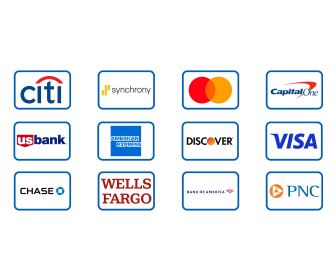Credit Card Myths Debunked: What Everyone Gets Wrong
Credit cards are one of the most misunderstood tools in personal finance. Myths about how they affect your credit score, how interest works, and what “good usage” looks like have been floating around for decades. In 2025, misinformation still leads millions to avoid or misuse their cards — costing them rewards, opportunities, and even points on their credit score. Let’s separate fact from fiction once and for all.
Myth #1: Carrying a Balance Helps Your Credit Score
False. This is one of the most persistent myths. You do not need to carry a balance or pay interest to build credit. Your score improves when you use your card and pay on time — not when you owe money. Carrying a balance actually hurts your score by increasing your credit utilization ratio and costs you unnecessary interest (with average APRs above 22% in 2025).
Reality: Pay your balance in full before the due date each month. It shows lenders that you’re responsible without costing you a cent in interest.
Myth #2: Closing Old Cards Boosts Your Credit Score
False again. Closing a long-standing credit card often hurts your score, because it reduces both your total available credit and the average age of your accounts — two key factors in FICO® scoring. Unless the card carries a high annual fee, keeping it open (even with minimal use) is better for your long-term credit health.
Pro tip: If you no longer use a card, make one small purchase every few months to keep it active. Some issuers close dormant accounts automatically after 12 months.
Myth #3: Checking Your Credit Score Hurts It
Not true. Checking your own score through your bank, a credit app, or a free monitoring site is considered a soft inquiry — it doesn’t affect your score at all. Only hard inquiries (like applying for a new credit card or loan) can temporarily reduce your score, usually by 3–5 points.
Monitoring your score regularly is actually smart — it helps you spot fraud, track progress, and stay informed about how your actions impact your credit.
Myth #4: You Should Have Only One Credit Card
Having just one card isn’t bad — but it limits your flexibility. Most credit experts agree that having 2–3 well-managed cards is ideal. It expands your available credit, improves utilization ratios, and provides backup options if one card is lost, stolen, or declined. The key is discipline: multiple cards are fine if you pay all on time and avoid overspending.
Example: A travel card for flights, a cash-back card for groceries, and a no-fee card for emergencies can cover most people’s needs efficiently.
Myth #5: Minimum Payments Are Enough
Paying only the minimum due each month might keep your account current, but it can take years to eliminate your balance and cost thousands in interest. Issuers design the minimum payment (usually 2–3% of your balance) to keep you in debt longer. To stay in control, pay as much as you can — ideally the full amount — every billing cycle.
Myth #6: Rewards Are “Free Money”
Rewards can feel like free money, but only if you avoid interest and fees. Many cardholders overspend chasing sign-up bonuses or categories they don’t need. The moment you pay interest, those points lose value fast. Rewards should complement your spending habits — not dictate them.
Expert insight: The best credit card users treat their cards like debit cards — spending only what they already have in their account. That mindset earns rewards safely and sustainably.
Final Thoughts
Credit cards aren’t dangerous — misunderstanding them is. When used correctly, they’re tools for building credit, earning rewards, and protecting your purchases. But myths about balances, closures, and “quick fixes” keep many people stuck in the dark. Learn the facts, pay on time, keep balances low, and you’ll unlock the real benefits credit cards were meant to offer.
Not financial advice. Credit rules, scoring models, and card terms vary by issuer. Always verify current details before making credit decisions.
Continue reading: The Dark Side of Rewards: When Credit Card Bonuses Cost More Than They’re Worth · How to Use a Credit Card Without Getting Into Debt (Really)



